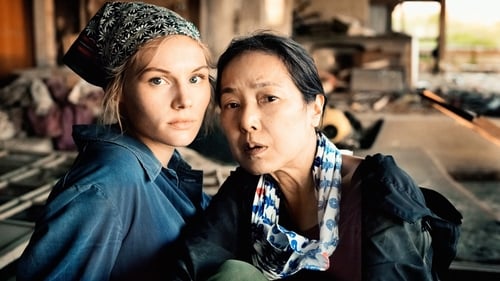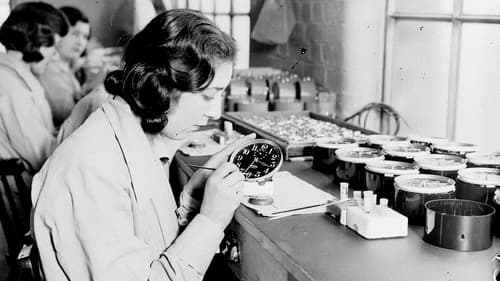Fukushima: Les voix silencieuses (2016)
Género : Documental
Tiempo de ejecución : 52M
Director : Chiho Sato, Lucas Rue
Sinopsis
More than four years after the Fukushima Dai-Ichi disaster, the invisible radioactivity is still omnipresent, but gradually vanishing from the locals 's mind.

True story of an American volunteer who discovered the unvarnished truth about the Fukushima nuclear disaster cover-up while living in Japan. A critical look at how the authorities handled the nuclear crisis and Tsunami relief by an American who volunteered in the clean-up.

In the aftermath of the Fukushima nuclear disaster, a Japanese farmer ekes out a solitary existence within the radiation red zone.

Chernobyl 1986. A nuclear reactor exploded, spewing out massive quantities of radiation into the atmosphere. Within days, the pollution had spread across Europe. Living on land contaminated with radioactivity would be a life-changing ordeal for the people of Belarus, but also for the Sami reindeer herders of central Norway. It even affected the Gaels of the distant Hebrides. Five years ago there was a meltdown at the Fukushima reactor, and thousands of Japanese people found their homes, fields and farms irradiated, just as had happened in Europe. This international documentary, filmed in Belarus, Japan, the lands of Norway's Sami reindeer herders and in the Outer Hebrides, poses the question: what lessons have we learned?


We return to Fukushima five years after the nuclear disaster caused by a tsunami. What issues does the clean up operation face? What progress has been made in dealing with this major disaster, especially in the detection and removal of melted nuclear fuel?

At 2:46 PM on March 11, 2011, the Fukushima Daiichi Nuclear Power Plant experiences a black out due to the aftermath of the Tōhoku earthquake and tsunami. The cooling system fails at the nuclear power plant and the temperature of the nuclear reactor rises. The worst case is coming. Scientists face an unexpected situation and government officials are confused by lack of information. Residents says goodbye to their hometown before evacuating.

'No-go zone' chronicles the daily life of the last man remained in the red zone after the evacuation of the Fukushima area and the nuclear power plant accident.

Six months after the explosions at the Fukushima nuclear plant and the release of radiation there, Professor Jim Al-Khalili sets out to discover whether nuclear power is safe. He begins in Japan, where he meets some of the tens of thousands of people who have been evacuated from the exclusion zone. He travels to an abandoned village just outside the zone to witness a nuclear clean-up operation. Jim draws on the latest scientific findings from Japan and from the previous explosion at Chernobyl to understand how dangerous the release of radiation is likely to be and what that means for our trust in nuclear power.

Una joven alemana entabla amistad con una mujer mayor japonesa durante un tour por la región de Fukushima, una zona afectada por el terremoto en del 2011 en Japón. Marie (Rosalie Thomas) ha decidido viajar de Alemania a Fukushima para cambiar su vida. Con su trabajo en la organización Clowns4Help espera llevar un poco de esperanza a los supervivientes del desastre nuclear. Pronto se da cuenta que no está capacitada para hacer más llevadera la tragedia de los afectados. Pero en lugar de huir decide quedarse con la arisca anciana Satomi (Kaori Momoi), la última geisha de Fukushima que decidió volver a su casa en ruinas en la antigua zona de exclusión. Dos mujeres totalmente diferentes pero que, cada una a su modo, están atrapadas en el pasado y deben aprender a liberarse de la culpa y de la carga de los recuerdos.

The Radiant explores the aftermath of March 11, 2011, when the Tohoku earthquake triggered a tsunami that killed many thousands and caused the partial meltdown of the Fukushima Daiichi nuclear power plant on the east coast of Japan. Burdened by the difficult task of representing the invisible aftermath of nuclear fallout, The Radiant travels through time and space to invoke the historical promises of nuclear energy and the threats of radiation that converge in Japan in the months immediately following the disaster.

Two weeks after the earthquake, writer and movie director Tatsuya Mori, journalist Takeharu Watai, movie director Yojyu Matsubayashi, and movie producer Takuji Yasuoka, headed for the disaster stricken area, not thinking this film would become a production. "Only to confirm the situation" was their common objective.

Eerie images of landscapes after the Fukushima nuclear disaster shot on black and white 8mm.

Since the 3/11 Great East Japan Earthquake, Fukushima is infamous worldwide for the radioactive contamination as a result of the explosion at the Daiichi (No.1) Nuclear Power Plant. However there is an untold story about what happened to the people living in the area after the Tsunami and Nuclear Disaster.

Documentary about the nuclear disaster that arose after a tsunami hit nuclear power plants Fukushima I and II. Employees who were present at the time of the disaster tell their story.

The exciting story of the splitting of the atom, a scientific breakthrough of incalculable importance that ushered in the nuclear age, has a dark side: the many events in which people were exposed to radiation, both intentionally and by accident.

Naraho town in Fukushima Prefecture is on the front-line of the government-funded nuclear power plant decommissioning work. Kokuhei Kusunoki is transferred from Aizu Wakamatsu City to Naraho Town to take over the Disaster PR Division. Murai takes Kokuhei around Fukushima including areas washed away by the tsunami. They examine the still incomplete railway lines, the unfinished decontamination area and villages in the danger zone, where deadly cesium continues to pile up. One day Kokuhei is told to organize a party to celebrate the professor who has been appointed as deputy director of the Atomic Energy Research Institute.










